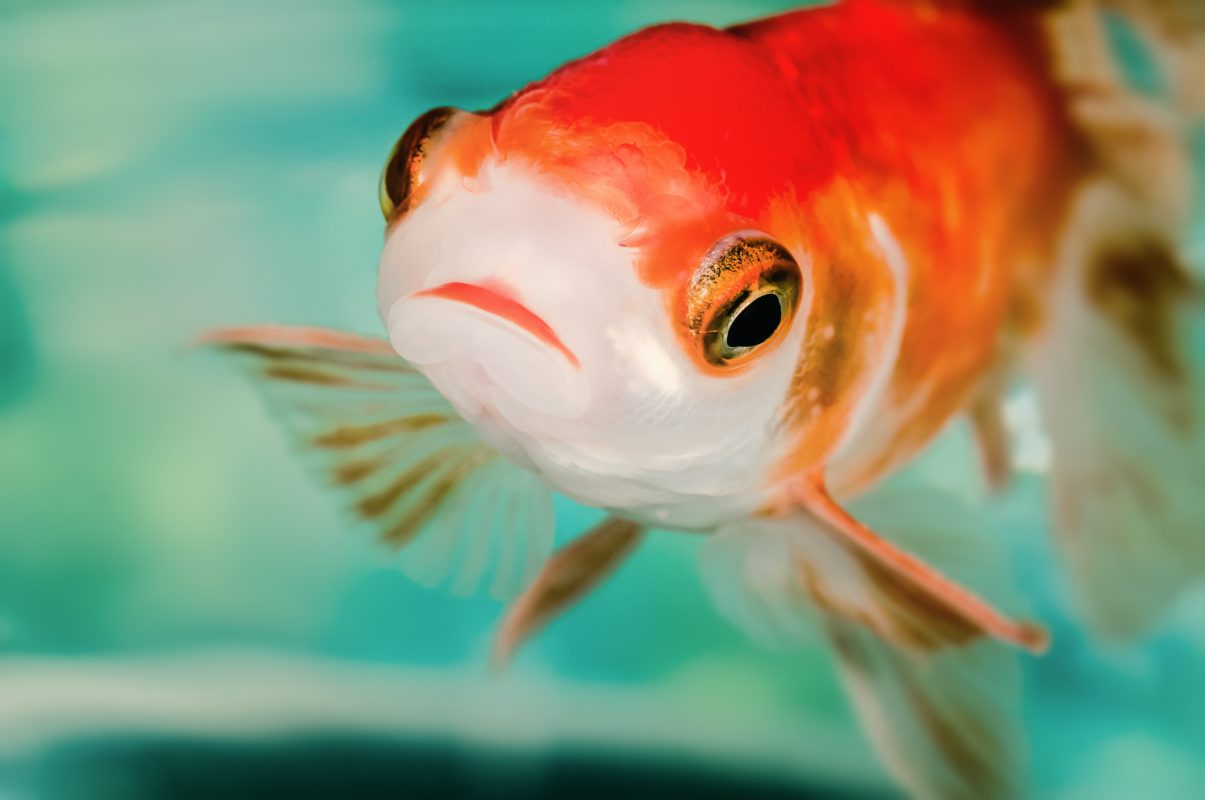One of the fish diseases dreaded by most fishkeepers is dropsy – an accumulation of fluid in the abdominal cavity. Experience tells us that once a fish exhibits these symptoms, reversal and cure is unlikely and one needs to prepare for the worst. In order to understand what causes dropsy, and how it might be treated and prevented, we need to first explore fish anatomy and physiology. So, grab your notebooks – we are going back to the classroom!
Let us keep things simple and focus on freshwater fishes, where dropsy is a much more common condition than their marine counterparts. These fishes have many electrolytes such as Na+, K+ and Cl– dissolved in their tissue fluids and an effect of these, in conjunction with plasma proteins, is to give the fish an osmotic potential greater than the freshwater in which they swim. Therefore, water molecules are drawn into the body of the fish across any permeable surfaces by osmosis and electrolytes can be lost to the environment via diffusion.
The vast majority of the body surface is impermeable; skin is thickened and often covered in scales or bony plates. However, two organs must retain a permeability with the water; the gills, where permeability is essential for gas exchange and nitrogenous waste excretion, and the gut, where nutrients are up taken.
These two organs are the holes in the osmoregulatory armour of the fish. For freshwater fishes adapting to this persistent salt loss and water influx across the gills and gut is essential. It is the one of the functions of the kidney to excrete this water, hence freshwater fishes produce copious amounts of a very dilute urine. The urination rate of European eels, (Anguilla anguilla) in freshwater ranges from 1.1 to 3.5 mls of urine, per kg of fish mass per hour, but when they move to seawater, (which has a higher osmotic potential than their body fluids), the urination rate ranges from 0.25 to 0.6 ml/kg/hr.
Therefore, if the gills are damaged, admitting more water than the kidneys can filter out, or if the kidneys fail, water begins to accumulate and will collect in the abdominal cavity where it is known as ascitic fluid or ascites – from the Greek askos, meaning sack or bag. However, failure of the kidney to osmoregulate is not the only reason fish can accumulate ascitic fluid, otherwise marine fishes would not exhibit the condition. Damage to the liver can lead to reduced blood flow through this large organ, much of which is from the portal vein carrying nutrient-rich blood from the intestine. In humans, this compromised blood flow raises blood pressure in the portal veins leading to fluids weeping out of small blood vessels and collecting in the abdominal cavity – a similar mechanism is presumed in fishes; liver damage due to infection or pollutants is often associated with ascitic fluid, even in marine fishes.
So, it is apparent then that dropsy, (we can now use the technical term ascites), is actually a symptom rather than a problem in its own right. Therefore, we must find the original cause of the liver or kidney damage if we wish to correct the condition – and this is usually easier said than done!
There are many fish diseases of bacterial or viral origin that have ascitic fluid as a common symptom, but all seem to include the liver, kidney or the spleen as target organs of infection. Crudely, if an internal organ with a large blood supply becomes infected or necrotic, blood flow through the organ is hindered which raises blood pressure in the supplying vessels leading to accumulation of ascitic fluid.
Dropsy is a simple and obvious condition to recognise, but it is possible to confuse with other conditions. The build-up of ascitic fluid places pressure on the abdominal wall causing the belly to distend outwards. As the condition progresses and more fluid accumulates those fish with scales or bony plates, (such as the armoured catfish), will show protrusions of these scales or plates, imparting a grotesque ‘pinecone’ like appearance to the fish. A fish in this condition really is very poorly as this is a clear sign of major organ failure. Other causes of abdominal distension to rule out include internal tumours or the fish simply being a gravid (full of eggs/fry), female. Tumorous growths rarely lead to a symmetrical distension of the abdomen, usually a protrusion to one side or biased to the front or rear of the fish will be apparent, also rarely will the scales protrude. Gravid females can have very round bellies, again rarely with protruding scales, but will not show other signs of disease such as loss of colour, loss of appetite, fin erosion, or respiratory distress. If a fish with dropsy is suffering major organ failure, there will be other clear behavioural and physical symptoms of disease. However, the only way to be certain a fish has excessive ascites is to observe the condition post-mortem.
Therefore, if we can rule out these other possible causes of abdominal distension we have to try to deal with the dropsy. Any fish disease investigation begins with a thorough water quality appraisal taking into consideration the environmental requirements of the livestock in the tank or pond. Using Tetra’s Test 6in1 alongside its free water testing app will provide a clear analysis of water parameters. Also consider the recent history of the environment. Have new fish, plants, or invertebrates been added? Have fish been handled lately or has vital hardware failed recently? Assuming only a single fish is affected it is vital to isolate it; remember there are numerous pathogens that can cause multiple organ failure and the affected fish is almost certainly a reservoir of pathogen. Isolation tanks must be housed well away from the main stock and have dedicated, filtration, nets, and siphons etc. The water chemistry and temperature in the isolation tank should equal that of the main tank and the décor of the isolation tank must be minimal, though a simple refuge for the fish must be provided.
Once in isolation a treatment regime is essential. Ideally, the agent of the infection must be identified and this can only be done by a veterinarian. Moribund (nearly dead), tank or pond mates may be sampled or biopsies may be taken from the individual concerned to identify the causative pathogen and find an antibiotic to which it is susceptible. This is likely to be administered to the isolated fish in addition to the population in the tank or pond. Clearly this service is going to be expensive and is likely to only be undertaken on high value fishes such as koi carp, marine fishes or broodstock discus for example. Non-veterinary treatment involves isolation, water quality improvement and possibly the use of a broad-spectrum aquarium antiseptic such as Tetra Medica General Tonic. Certain freshwater fishes can benefit from an addition of table salt to the isolation tank water. Salting to 3 g/l will reduce by one third the osmotic influx of water into the fish, and so if the ascites is due to kidney failure, this lessens the load on the struggling kidney, possibly facilitating a self-cure. If the ascites is due to liver or splenic damage, salting will have little effect. Always investigate if your fish are able to tolerate a salt regime in their water, as a rough rule of thumb, soft water species are much less tolerant.
Prevention of dropsy in healthy stocks centres on the reduction of stress in fishes and quarantine. Opportunistic bacteria such as Aeromonas hydrophila in the tank or pond are able to attack fish whose immune systems have been weakened by stress, which has led to dropsy. Quarantining new stocks should prevent pathogens exotic to the tank or pond from entering the system – any disease they cause should strike in isolation from the main stock of fish. Lastly, feeding a quality diet rich such as TetraMin which is rich in prebiotics will support fish health. Remember to always make sure food is within expiry date and is stored in a cool, dry place as this ensures optimal nutrition.

